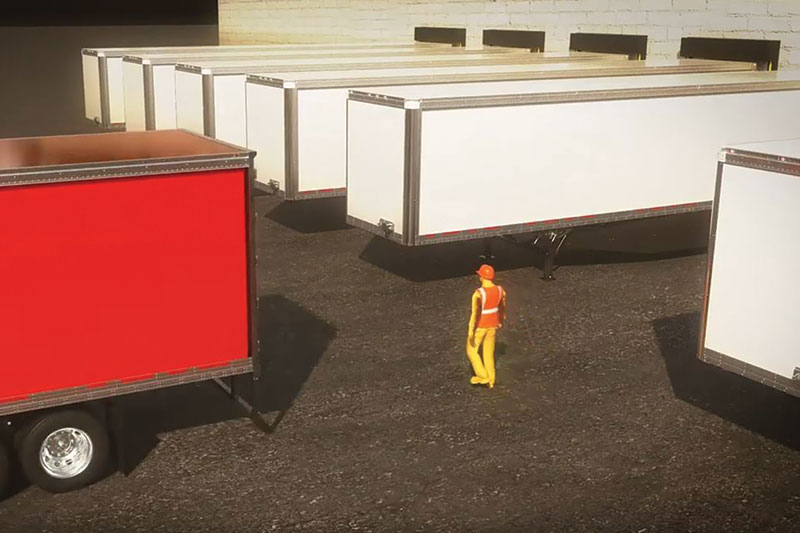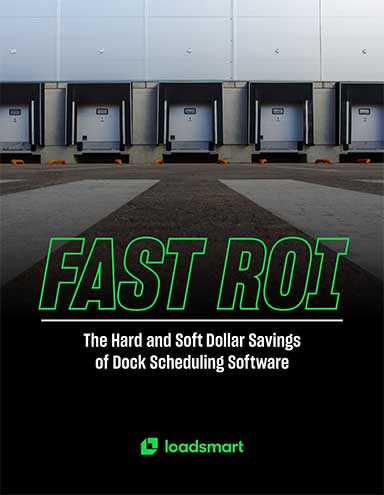Emphasizing loading dock safety, sustainability & efficiency
The loading dock gets more attention as companies look for new ways to eke more efficiency and productivity out of their distribution operations in the safest way possible.
The unsung hero of any operation that moves products, the loading dock is getting more attention lately as companies better understand the role that docks play in their end-to-end supply chains. What may have been a place to drop, stage and then reposition goods when loading or unloading has—at least for some—become a more dynamic environment that’s decked out with the latest technology, equipment and safety gear.
As they continue to grapple with a labor shortage, an uptick in e-commerce orders, pandemic effects and safety concerns, organizations are scrutinizing, improving and optimizing the activity that takes place on their loading docks. A work area where 25% of all industrial accidents happen, the dock is also being outfitted with more safety equipment and features to protect workers.
Rich Schlesinger, director of U.S. distribution sales at 4Front Engineered Solutions, says companies are looking at their existing facilities and doing everything possible to eke more productivity and efficiency out of them. “In light of everything that’s gone on, there’s a need to be super-efficient with what you have versus just building a new facility,” Schlesinger explains. “With vacancy rates low, most companies are focused on getting trucks out as quickly as possible utilizing every tool that they can.”
Thanks to advancements in technology and the innovation of dock equipment and solutions vendors, companies now have access to advanced tools that help make their docks more efficient, safe and productive. Using dock levelers, energy-efficient doors and dock shelters, for example, organizations can create an energy-efficient environment while improving the overall functionality of their docks.
Add digital tools to the equation and the dock becomes a connected ecosystem where managers and workers have clear visibility over what’s going on across dozens or hundreds of dock doors at any given time. 4SIGHT Connect’s digital tools, for example, provide complete visibility and control over all aspects of a yard and dock operation using software, control panels, real-time monitoring, alerts and carrier communications.
“Connected systems help companies gain efficiencies and get trucks in, unloaded, loaded and back out the gate faster,” says Schlesinger. When a truck is loaded and ready to move away from the dock, the system alerts the dock employee. Or, if there’s a problem with one of the dock restraints or another piece of equipment, he or she will be alerted to the problem immediately (versus waiting until someone visibly notices the issue).
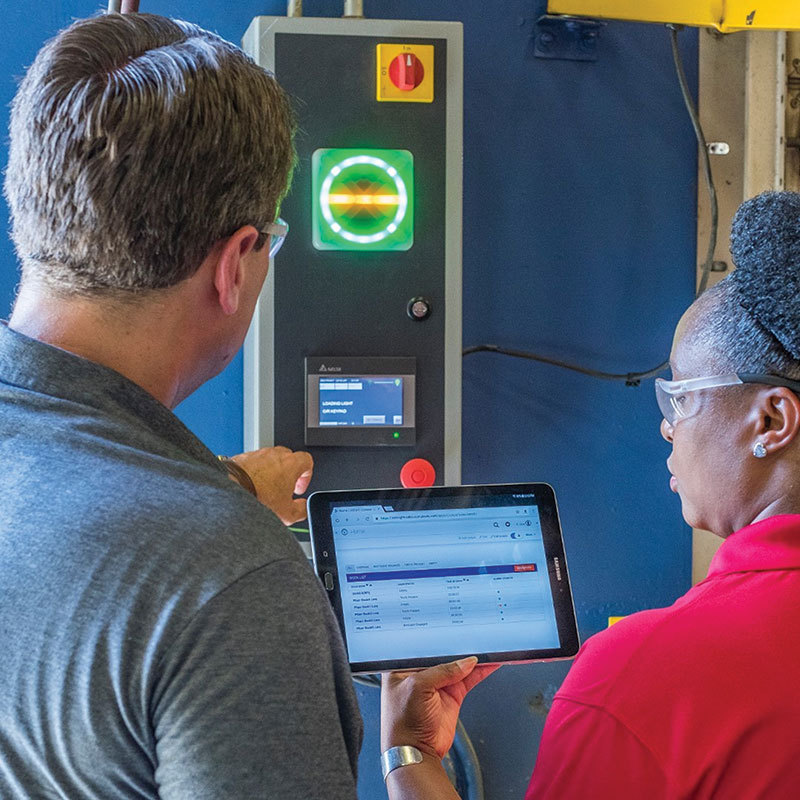
A tablet can interface with a digital master control panel using 4SIGHT Connect Digital Dock.
Outfitting dark operations
With more autonomous materials handling vehicles being used in warehouses and DCs nationwide, Schlesinger says 4Front is getting more requests for systems that bridge the gap between those vehicles and the dock equipment. He says these requests picked up in 2021 as companies struggled under labor constraints, ongoing supply chain disruption and high demand for their products. Going forward, Schlesinger says more “dark” distribution facilities could be used to offset these and other complexities.
“In a dark facility where multiple autonomous forklifts are moving around, having an employee pushing buttons on loading dock equipment for two minutes and then walking away until the forklift is loaded again is inefficient,” Schlesinger says.
Knowing this, a lot of companies want their loading dock equipment to interact directly with those autonomous forklifts,” Schlesinger continues. “This is one of the most interesting developments we’ve started to work on this year; we have a couple of projects in the works and expect more, similar requests moving forward.”
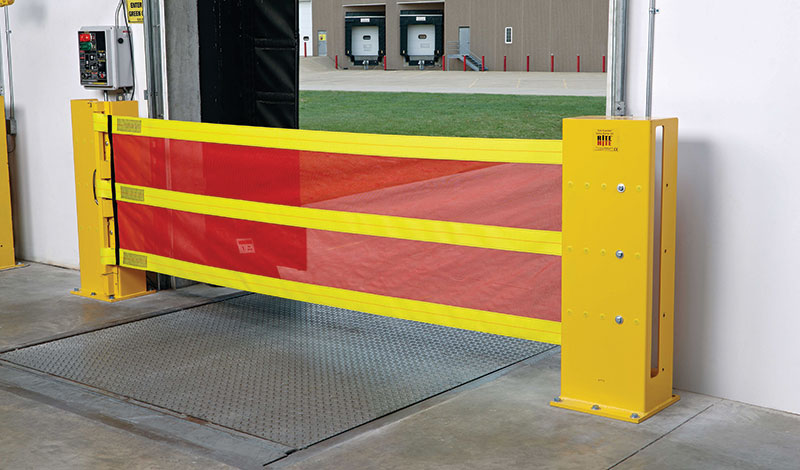
In 2021, there was a clear push to get products handled faster at the dock and, in some cases, with fewer employees.
A focus on sustainability
With customers and business partners demanding that the companies they do business with operate more sustainably, the dock isn’t always factored into those conversations. However, Dirk Seis, director of marketing at Ideal Warehouse Innovations, says he’s seeing more interest in sustainable products that last longer and are more environmentally friendly. This is of course part of a broader trend and one that Seis expects to continue in 2022.
“The ‘throwaway society’ isn’t good for the environment or the planet,” says Seis, “and companies across the board are being encouraged to make their facilities, buildings and equipment last longer.” He says Ideal Warehouse is taking part in this movement and developing products that last longer. Its new SLIDE-effect dock bumper absorbs the impact of trailers reversing into its dock position. The product features a built-in sliding mechanism to limit the effect friction and abrasion have on the bumper’s life.
“Bumpers are one of the most important pieces of the dock; they’re what stop the truck from hitting building walls and dock levelers,” Seis explains. “They also wear out pretty quickly, depending on how they’re made. From a sustainability standpoint, we’ve built a dock bumper that lasts longer and also comes with a lifetime guarantee.”
Along with developing more sustainable dock operations, companies are looking to reduce downtime and increase uptime on their loading docks. Citing a recent study, Seis says a loading dock that’s taken offline costs companies about $1,700 an hour. Multiply that number across hundreds of docks and days, and even a minor equipment failure or work interruption can add up to significant financial losses.
To offset these losses, Seis says companies need equipment and products that last longer and require less maintenance. They’re also looking for products that are easy to use, support faster truck loading and unloading times, and help create a safer work environment.
“One effective way to increase efficiency and reduce downtime is to invest in safer equipment,” Seis points out. To support its customers in this area, Ideal makes a line of trailer collapse prevention systems. The product is placed under the nose of the trailer to support it in case of a possible collapse.
The Shuntable Trailer Stand is deployed by a shunt truck, making it hands-free and easy to put in place. “Traditionally, a dock employee would have to come out and place the trailer stand into position and then go back to what he or she was doing,” says Seis. “We’ve taken some time out of that operation and also made it safer, both of which help support higher efficiency for warehouses and DCs.”
The push to automate
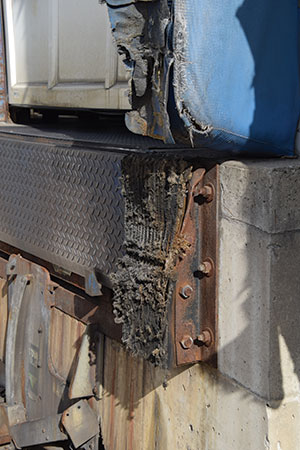 As he reflects on 2021, Walt Swietlik, director of customer relations and sales support at Rite-Hite, says there was a clear push to get products handled faster at the dock and, in some cases, with fewer employees. “We’re doing everything we can to help support those efforts,” says Swietlik, who adds that while Rite-Hite doesn’t manufacture the actual automation equipment, it has developed new solutions that allow its equipment to communicate and interact with the automation equipment “as efficiently and safely as possible.”
As he reflects on 2021, Walt Swietlik, director of customer relations and sales support at Rite-Hite, says there was a clear push to get products handled faster at the dock and, in some cases, with fewer employees. “We’re doing everything we can to help support those efforts,” says Swietlik, who adds that while Rite-Hite doesn’t manufacture the actual automation equipment, it has developed new solutions that allow its equipment to communicate and interact with the automation equipment “as efficiently and safely as possible.”
Of course, with more technology comes more data and the need to collect, analyze and use that information for better decision-making. “Everyone is focused on this right now, with the ultimate goal of creating a more efficient operation,” says Swietlik. For example, he says companies are looking at how long trailers are sitting at the dock versus how long the active loading and unloading process took. Any excessive dwell times can have a major impact on the overall efficiency of an operational loading dock.
To support this increased focus on data, RiteHite’s Opti-Vu Industrial Internet of Things (IIoT) platform monitors energy and door usage using data analytics and product updates. Armed with this information, companies can minimize energy loss, unnecessary door cycles and costs. “Our data accumulation tools are an exciting change to our business and a way to keep ahead of what’s going on in the marketplace,” says Swietlik. “Opti-Vu not only helps manage the dock operations, but it also can be used on busy doors and intersection openings within a facility.”
Anyone building new or upgrading an existing facility in 2022 should start early, according to Swietlik, who points to the ongoing supply chain shortages as a potential stumbling block for organizations that are moving in this direction. “It’s an industry-wide challenge at this point, so the best strategy is to plan ahead,” he says. “Get any decision makers, sales teams and other stakeholders involved in the first quarter instead of waiting until later in the year to make your move.”
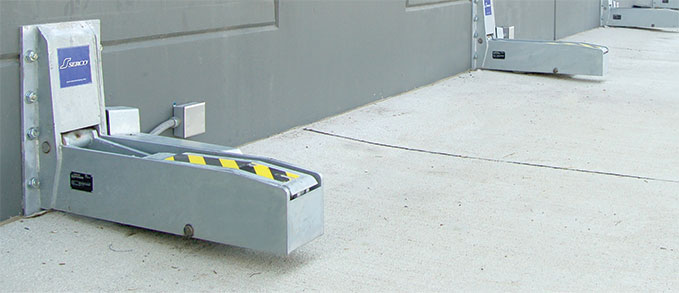
Using dock levelers, energy-efficient doors and dock shelters, organizations can create an energy-efficient environment while improving the overall functionality of their docks.
Stick to the basics
To companies shopping for new dock equipment and solutions this year, Schlesinger says sticking to the basics is a good first step. “The classics are classic for a reason. I always preach restraints and safety because the dock is a place where people are still moving faster than ever,” he says, adding that the current labor challenges that warehouse and DC operators are dealing with make safety a top consideration.
“It may not be as cool, hip and modern as autonomous dock equipment,” he adds, “but a fully-functioning trailer restraint system used on a dock will always pay dividends.”


